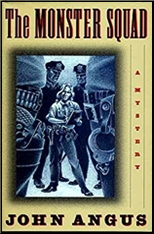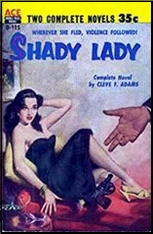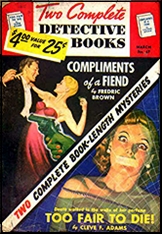Sun 11 Nov 2018
Movie Review: A CLIMATE FOR KILLING (1991).
Posted by Steve under Mystery movies , Reviews[7] Comments
A CLIMATE FOR KILLING. Black Crow Productions / Propaganda Films, 1991. John Beck, Katharine Ross, Steven Bauer, Mia Sara, Phil Brock. Written and directed by J. S. Cardone.
I led a sheltered life through the 1990s. Before watching this movie, at the heart of which is a better-than-average murder mystery, I’d heard of only one of the members of the cast. Check the listing above, and you can probably tell which one that was. But between them all, they probably appeared in well over a hundred movies, many of them like this one, most of them without a lot of pretensions and with budgets, shall we say, on the skimpy side.
The story. Found in the desert in Yuma County, Arizona, is the body of decapitated woman. Her hands have been removed as well, making it difficult if not impossible to identify her. Luckily Grace Hines, the local coroner (played by Katharine Ross), recognizes the birthmark on her thigh. Unluckily she can tell no one but Paul McCraw of the sheriff’s office (John Beck) since she saw the mark while performing an illegal abortion on the woman many years before.
Which gets us to the core of the matter. Now the problem is the fact that the woman was presumed dead 15 years before. She was presumed murdered by her much older husband, who committed suicide later the same week in a fit of remorse. Written out like this, I think you may be able to put two and two together and get close to four faster than the investigators on the case manage to do, but it’s still an interesting challenge.
Filling out the running time, though, is a subplot that arises when a young investigator (Steven Bauer) arrives at sheriff’s office tasked by a government office in Phoenix to “modernize” their operations there. Problem is that he’s a “by the books” kind of guy, and McCraw likes to work on “instinct.” Matters get even more complicated when the new guy starts taking out McCraw’s daughter.
This part of the story is filler at best, but it does add another dimension to it. I watched the movie last week, but I recorded it from Cinemax on a VHS tape some 25 years ago. It has the ambience and basic ingredients of a made-for-TV movie, but it turns out it was not, as evidenced by a topless dancer in a local bar in one scene, and one rather graphic sex scene toward the end of the movie. Both gratuitous? Yes, of course they are.


